There’s a primal human pleasure in simply finding out what something does. It’s the reason you’d still want to push a button that says “do not touch”, or wonder what’s behind a locked door. Keeper thrives on that idea, building out a game of discoveries and experiments around it.
Seeing extended gameplay for the first time at gamescom, Keeper’s key trick – of telling its story in a never-before-seen world, all without words – means that almost everything you do is less about completing an objective you’re told to follow, and more about finding out what the objective is.
Shine Your Light
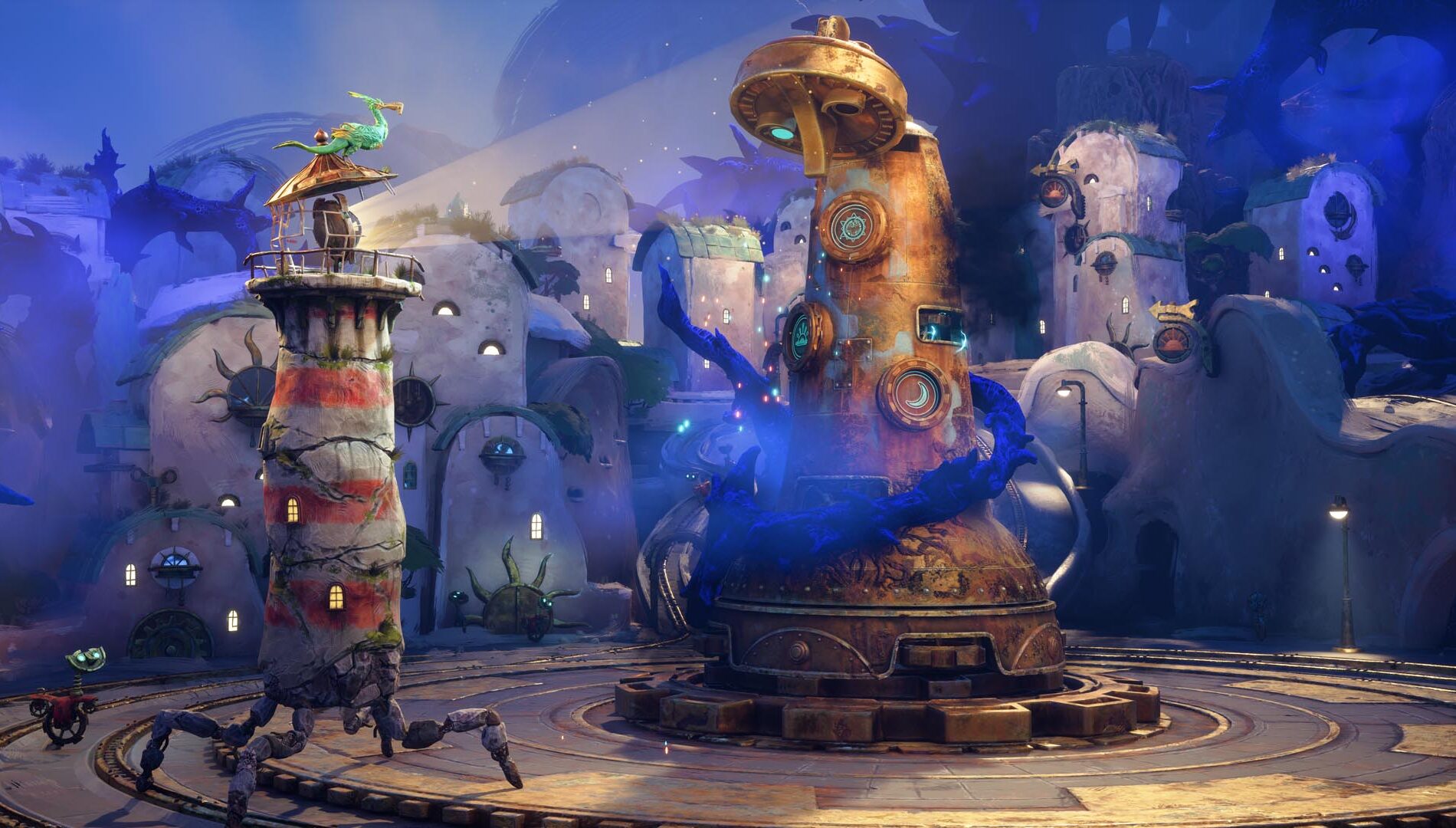
First revealed at Xbox Games Showcase earlier this year, Keeper is a dreamy, otherworldly adventure that puts you in the misshapen body of a suddenly sentient walking lighthouse – but there’s no narrator, nor talking sidekick to explain where you are, what’s going on, and what you should be doing. Working these things out is the game.
“A key tenet of this game is the unexpected,” Creative Director Lee Petty tells me. “We wanted players to be able to relax a bit, chill out a bit, and embrace the unexpected. So to that end, there’s some experimentation, but there’s nothing the player can do to die in this game. They can’t mess up the experience. We sort of get the player on board early so that, when something unexpected is thrown at them, it’s not a moment of panic that they don’t know how to get through.”
In three portions taken from early sections, I see how Keeper slowly introduces new ideas in subtle ways. With only the ability to walk, shine a beacon, and the help of a bird companion called Twig, the player needs to work out what they should be doing through context clues.
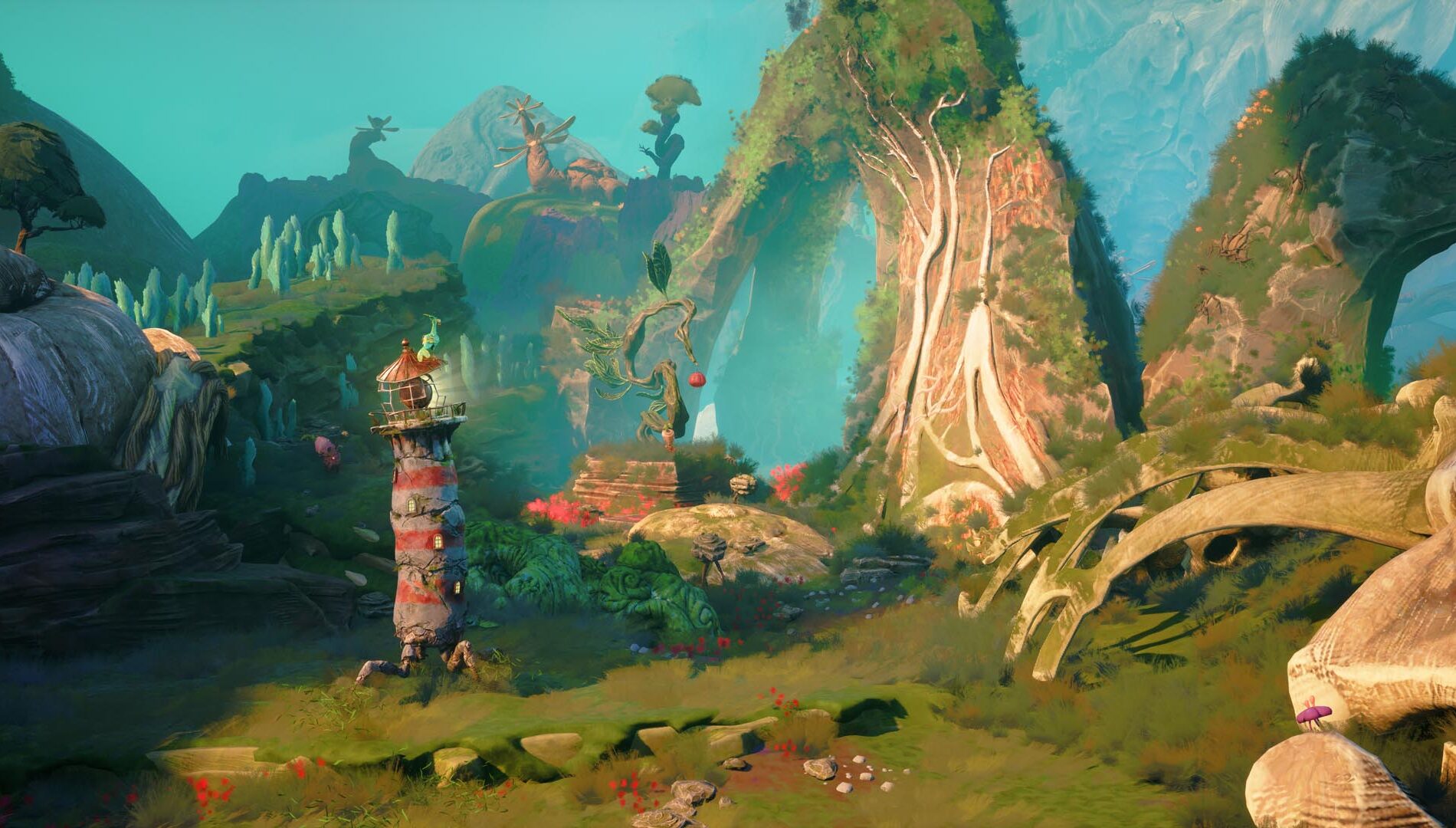
“The lighthouse beam has two main modes,” explains Petty. “It has an unfocused and a focused mode. The unfocused mode is for exploring – as you shine it around, you might see little subtle shimmers or reactions in the world. Bigger transformations occur when the player focuses that bigger, brighter beam on things, and that’s often used to solve puzzles as well.
“Twig rides along on the lighthouse and can do things that the lighthouse can’t. The lighthouse doesn’t have arms, only legs. Twig however, can directly manipulate things in the world. So what the player can do, for example, to solve a puzzle is use a combination of that light ability and Twig’s ability to pick up and collect things.”
I see this early on, as the lighthouse comes across a lumpen… thing blocking its path. Under the unfocused beam, the creature bristles slightly, enough to show you that it’s reacting – and, focusing the beam, it puts a claw in front of its eyes. This produces a shimmer, which attracts Twig, who flies to grab the claw, and an option to “tug” appears on the screen. Twig pulls at the creature, who flops to one side, revealing a seed that Twig stows away for a future puzzle.
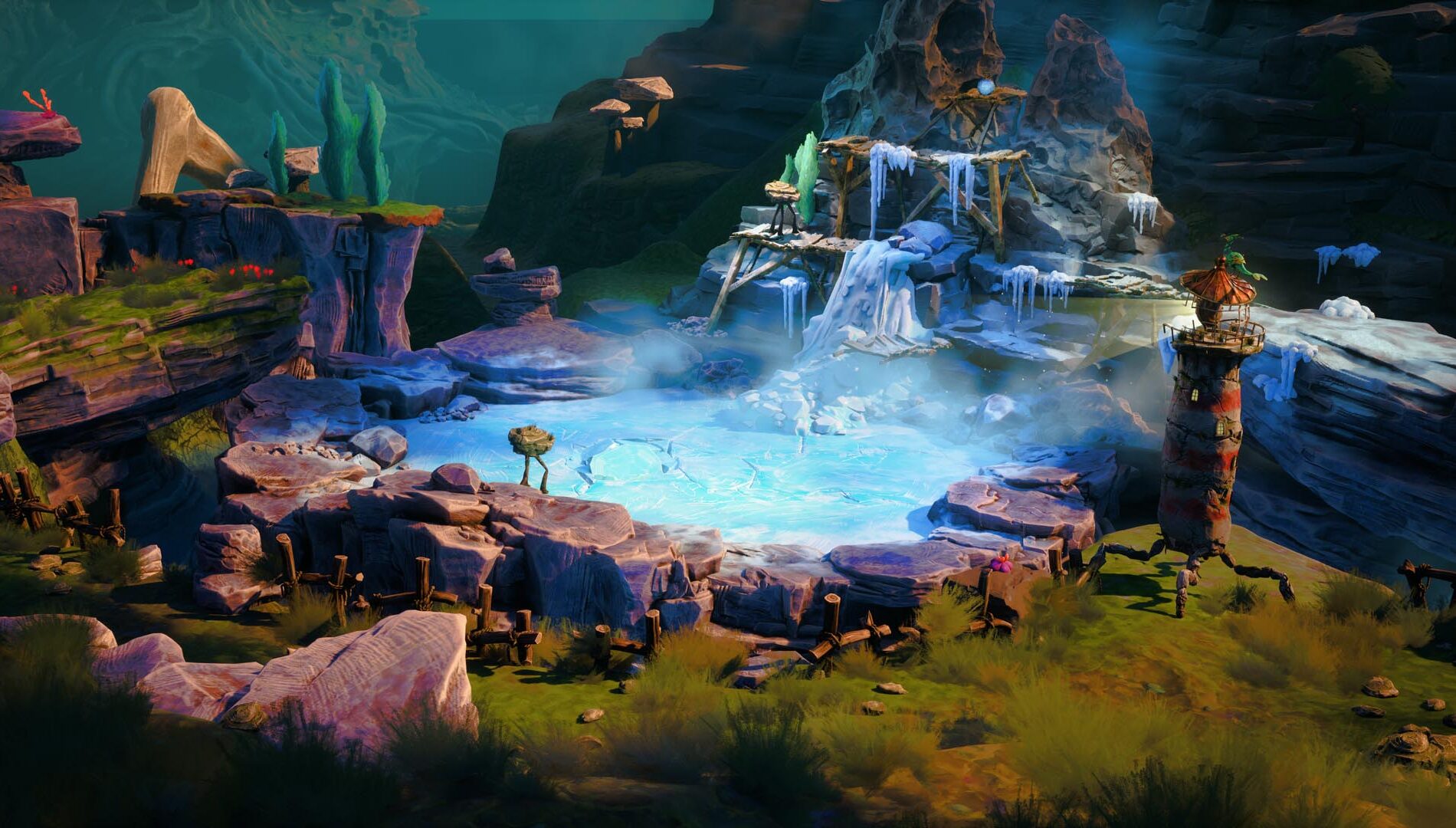
It’s a sequence of purely organic discovery – the game doesn’t tell you what you need to be doing, and the weirdness of it all means you don’t come in with a preconceived idea of what you should be doing, other than trying things out. And this is repeated throughout. I see the lighthouse effectively organising a dance of creatures attracted to its light to smash through a sheet of ice, a gorgeous discovery that touching a certain spore-like plant will allow the lighthouse to subvert gravity itself, and even a wild sequence in which it becomes apparent that the beam can control the flow of time on objects it touches in a certain area.
The real ace in the hole here is that Keeper’s world is unlike any other – its bucolic landscapes inhabited by scuttling, alien-like creatures, trees with faces, and flora with unusual effects. It means that, even once you do work out where to go, or what to look at, the effects of your interaction remain a surprise. Crucially, Double Fine never want that feeling to go away:
“We wanted the entire game to have this sort of organic, almost handmade, bespoke feel,” Petty adds. “It’s not a game of repeating actions as much as a game of wandering among unique areas and set pieces that change.”
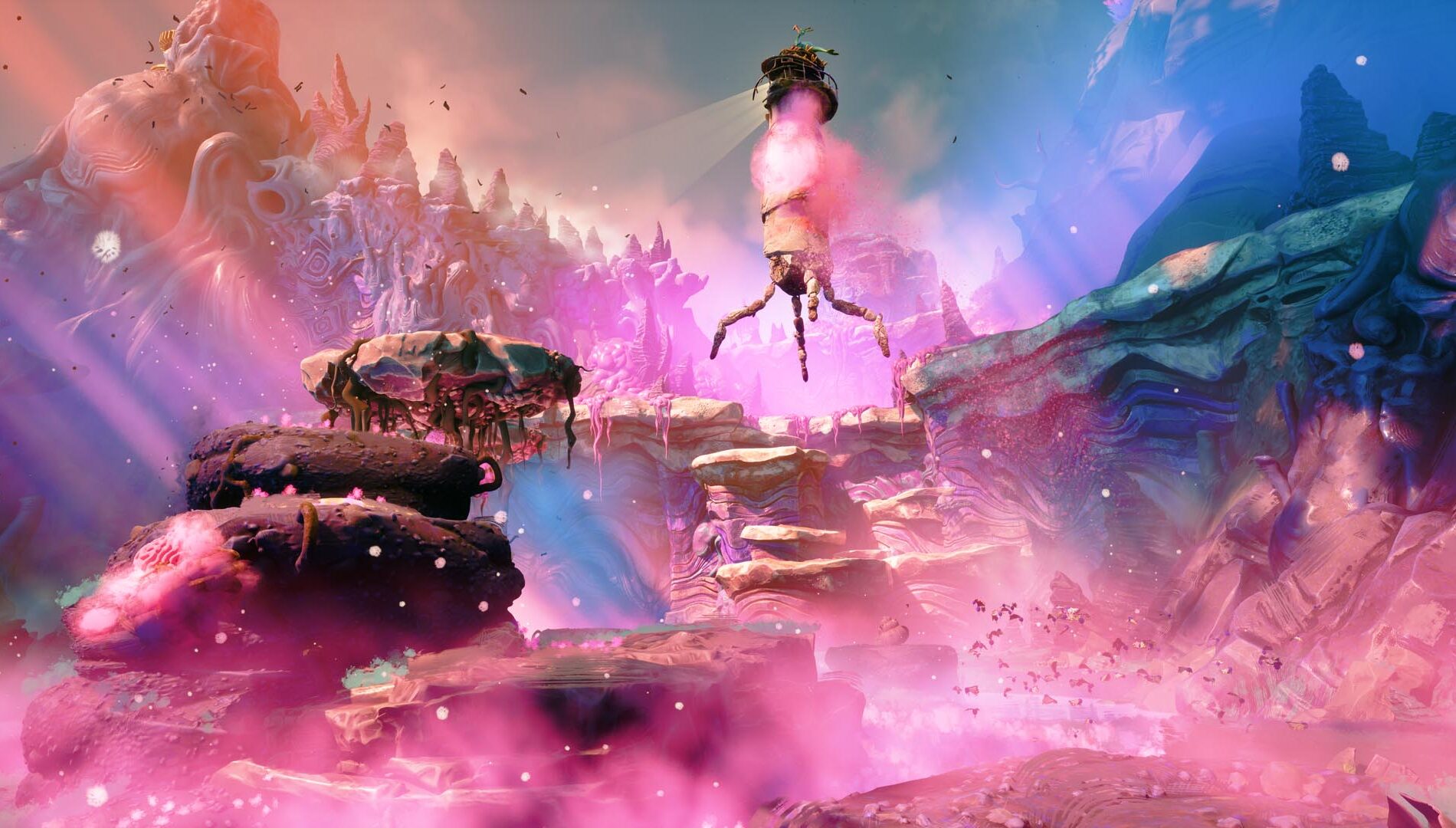
In just 15 minutes of gameplay, I see – by my count – 11 different puzzles (not to mention smaller interactions as you prod and poke at the world around you). It’s clear that the aim here is to keep surprising the player with what they realize they’re being asked to do. Not all of this is ‘mission-critical’, either – the more you explore, the more you’ll find:
“There’s a lot of stuff for the player to discover along the experience,” adds Petty. “Some of those come in the form of environmental storytelling, some of those things are in the form of hidden interactions with the various creatures, and a lot of it is also just about the players’ interpretation of the games events, and finding meaning in the experience.”
Crucially, though, this is all done with the same small pool of button presses. It might have been complex for the developers to find so many ways to play with these toys, but they didn’t want the player to be bogged down by an unwieldy control scheme:
“We wanted Keeper to be an experience that wasn’t especially difficult to play,” says Petty. “It’s not a game about control, mastery or incredibly hard challenges, because we wanted this sort of unique, weird-but-chill experience for players to go on. We don’t have a need for all those buttons on the controller.
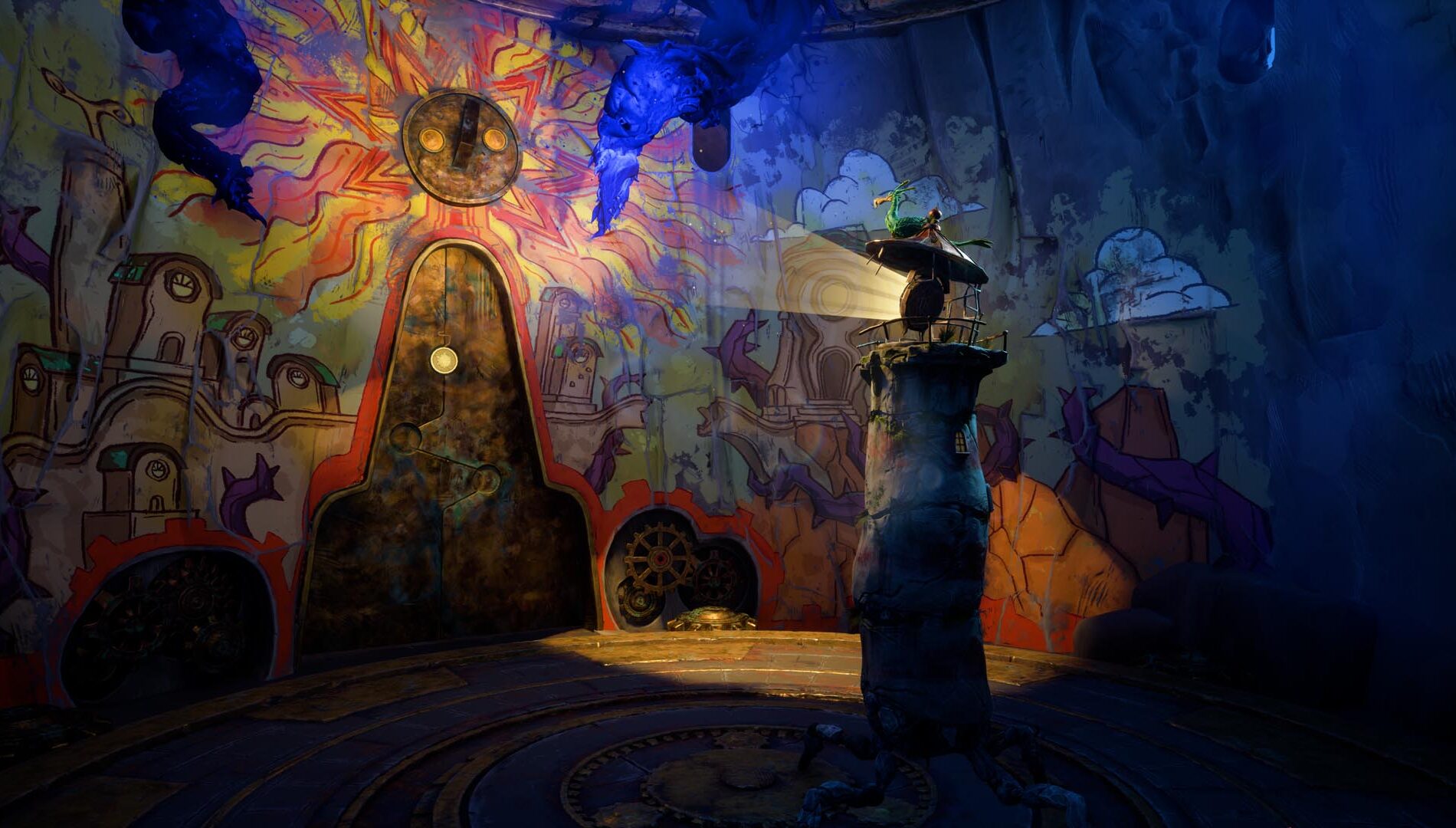
“And we also just have a really big set of accessibility features where people can map the controls to what they want. If they prefer to play with keyboard and mouse, or they play on a controller, we support both of them.”
For a game this overtly strange, it’s a way of easing you in – in all ways, Keeper has been designed as a welcoming experience, not an alienating one. You’re discovering this world, not being repelled by it – and it seems there’s a great deal to discover. What I’ve seen is from its earliest stages, and a literal cliffhanger at the end of the demo – in which the lighthouse tumbles into an abyss caused by a bridge, well, ceasing to exist under its feet – promises that there are far more surprises to come.
Keeper arrives for Xbox Series X|S, Xbox on PC, Xbox Cloud, and Steam on October 17, priced at $29.99 USD. It will be an Xbox Play Anywhere title, and available day one with Game Pass.

Keeper
Xbox Game Studios
On an island in a long-lost sea, a forgotten lighthouse stands dormant in the shadow of a distant mountain peak. As withering tendrils spread and coalesce, it awakens. Taken with a mysterious sense of purpose and joined by a spirited seabird, it embarks upon a heartening tale of unlikely companionship, an odyssey of mystifying metamorphosis, and an unexpected journey towards the center of the island, into realms beyond understanding.
The post Keeper’s First Extended Gameplay Shows Us an Ever-Changing Adventure appeared first on Xbox Wire.


